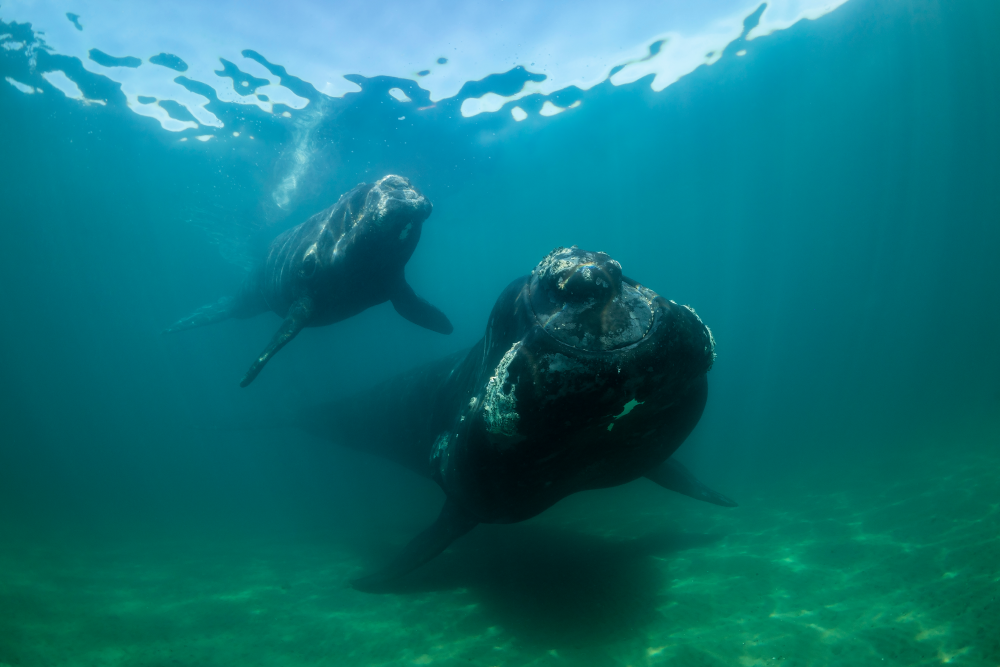In 1989, a team armed with specialist crossbows collected skin samples from whales that would lead to a remarkable discovery three decades later. Those skin swatches came from southern right whales (Eubalaena australis), and when study author Carla Crossman of Saint Mary’s University, Canada, got the chance to analyze their genes, she discovered something science had never reported in this species before.
Like humans, whales’ chromosomes most commonly express either XX or XY for female or male sex, respectively. One of the whale skin samples, tagged Eau10b, had molecular markers that suggested the animal was XX in initial tests, pointing towards the animal being a female.
However, a little something called the sex-determining region Y gene (or SRY) threw a spanner in the works, because it only exists on the Y chromosome, and yet upon further testing, Eau10b was positive for it. That didn’t fit with the initial test’s indication that Eau10b fell into the XX category.
We are fairly confident that sex chromosomal aneuploidies are rare.
Carla Crossman
Further genetic testing, including analysis for other markers, confirmed that Eau10b had both X and Y chromosomes, pointing to an XXY arrangement. This is an example of what’s known as sex chromosomal aneuploidy, where an individual expresses an atypical number of sex chromosomes, and it marked the first time it had ever been identified among southern right whales.
The same process that creates an XXY individual could also create an XXX or XYY. It occurs when an extra copy of the duplicated chromosome effectively sneaks in during cell division, and it can have a knock-on effect on an animal’s fertility status.

Sex chromosomal aneuploidy can impact an individual’s fertility.
Image credit: wildestanimal/Shutterstock.com
Detecting aneuploidy can be difficult in any animal, as the chromosomal combination doesn’t necessarily throw up obvious signs. In humans, it’s known as Klinefelter syndrome, a specific chromosomal disorder that’s characterized by the presence of an extra X chromosome. It’s one of many variations from XX or XY that can fall under the umbrella term of intersex, and it can go undetected even beyond puberty. What symptoms might arise, says the NHS, include hypermobility, undescended testicles, increased height, broad hips, reduced body hair, and enlarged breasts, among others.
Even with all our knowledge, it can take some time before the unique sex chromosomes of individuals with Klinefelter syndrome are detected by modern medicine, so – understandably – identifying aneuploidy in whales is even trickier. Not least because these animals spend the vast majority of their lives out of our sight and reach under the water, and even if we get a chance to get near individuals like Eau10b, such a genotype wouldn’t be obvious.
We present a few different and easy methods to screen samples for aneuploidies that should work across species to improve our understanding of just how common/rare they are in the wild.
Carla Crossman
As for how rare Eau10b is? Crossman says it’s a question that’s difficult to answer, but an answer that improved techniques could get us closer to.
“We are fairly confident that sex chromosomal aneuploidies are rare (pretty good numbers exist for humans, but not most species),” she told IFLScience. “Exactly how rare are they in the wild, we don’t really know. The more we are looking with higher resolution genetic data, the more we are finding. This was the first documented case in a Southern right whale, but it has been found in other cetaceans as well.”
“Sex chromosomal aneuploidies are present in at least this free-swimming Southern right whale and can largely go undetected both physically and even with some routine sex determination methods. We present a few different and easy methods to screen samples for aneuploidies that should work across species to improve our understanding of just how common/rare they are in the wild.”
The study is published in the journal Marine Mammal Science.
[H/T: Nautilus]
Source Link: First-Ever Intersex Southern Right Whale Discovered Among 36-Year-Old Crossbow Skin Samples